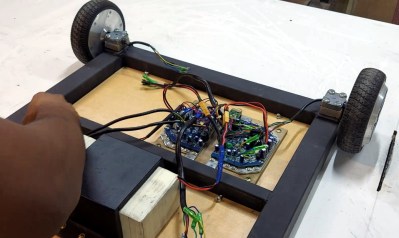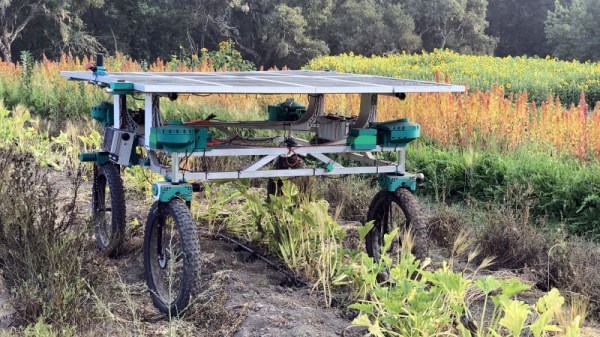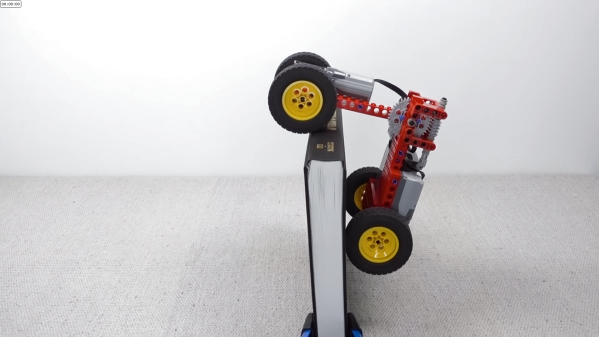They might not be the hoverboards we were promised in Back to the Future II, but the popular electric scooters that have commandeered the name are exciting pieces of tech in their own way. Not because we’re looking to make a fool of ourselves by actually riding one, but because they’re packed full of useful hardware that’s available for dirt cheap thanks to the economies of scale and the second-hand market.
In his latest video, the ever resourceful [MakerMan] turns a pair of hoverboards into a capable remote controlled mobile platform perfect for…well, whatever you want to move around. Its welded steel construction is certainly up for some heavy duty tasks, and while we can’t say we’d ever tow a SUV with it as shown in the video below, it’s nice to know we’d have the option.
 The project starts by liberating the four wheel motors from the scooters and carefully cutting down the frame to preserve the mounting hardware. These mounts are ultimately welded to the frame of the rover, with a piece of diamond plate screwed down on top. On the bottom, [MakerMan] mounts the two control boards and a custom fabricated 36 V battery pack.
The project starts by liberating the four wheel motors from the scooters and carefully cutting down the frame to preserve the mounting hardware. These mounts are ultimately welded to the frame of the rover, with a piece of diamond plate screwed down on top. On the bottom, [MakerMan] mounts the two control boards and a custom fabricated 36 V battery pack.
He doesn’t go into any detail on how he’s interfacing the RC hardware with the motor controllers, but as we’ve seen with past hacks, there’s open source firmware replacements for these boards that allow them to be controlled by external inputs. Presumably something similar is being used here, but we’d be interested to hear otherwise. Of course you could swap the RC hardware out for a microcontroller or Raspberry Pi if you were looking to make some kind of autonomous rover.
Don’t have a welder or convenient collection of scrap steel laying around? No worries. Prolific tinkerer [Aaron Christophel] put something very similar together using bolted aluminum extrusion.
Continue reading “Hoverboard Turned Heavy Duty Remote Control Rover”

















